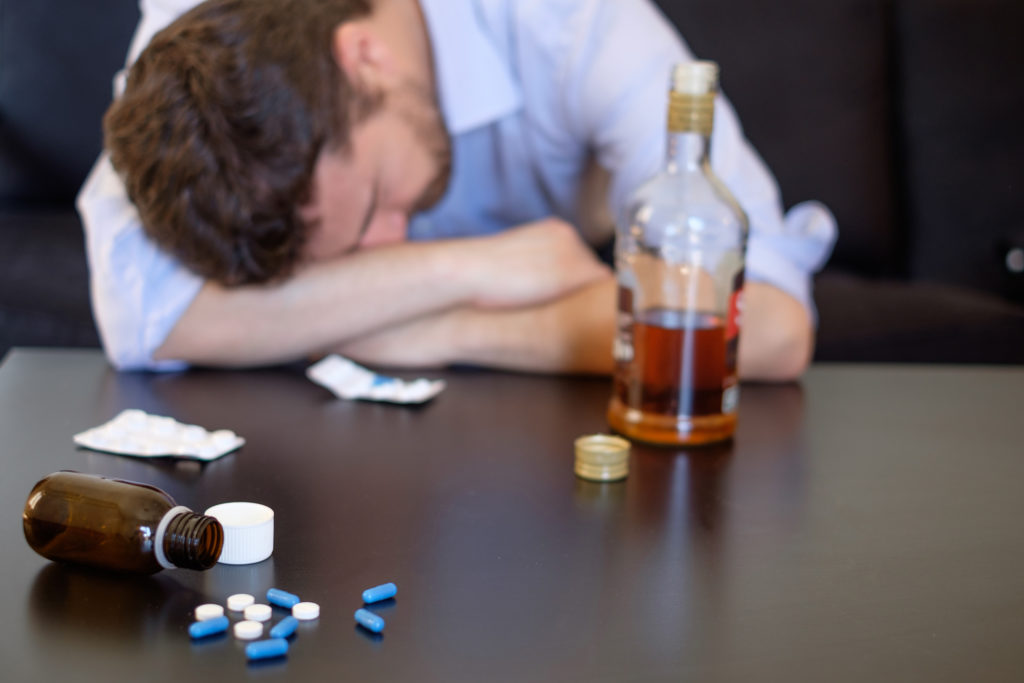What Is Fentanyl?
Fentanyl is a powerful pain medication. It is an opioid, like morphine, codeine, oxycodone (oxys), and methadone. Fentanyl is much more potent than most other opioids—up to 100 times stronger than morphine—and is dangerous if abused. What does fentanyl taste like? Fentanyl has no taste of its own. However, when taken in excessive doses, it becomes bitter to taste. Fentanyl is addictive, and the long-term effects of fentanyl abuse can cause damage to the entire body. When fentanyl and alcohol are taken together, it can cause irregular heart rate, respiratory arrest, coma, and even death. Fentanyl rehab and fentanyl detox can help those suffering from fentanyl addiction overcome their withdrawal from fentanyl.
Fentanyl’s use and availability have increased in the medical community and recreational drug users. In most states across the US, the use of opioids, including fentanyl, is rising fast. From March 2018 to February 2019, 47% of drug overdoses involved fentanyl. 2 mg of fentanyl is a lethal dose, but doses as small as 0.25 mg place the user at a high risk of overdose. In addition to its high potency, the “hot spots” it leaves in cutting other drugs make fentanyl among the most lethal substances available on the recreational drug market.
It’s essential to know what fentanyl abuse signs look like. Fentanyl is abused because it produces a more potent high than other opioids. Because fentanyl is sold illegally in powder, liquid, spray, or pill., some substance abusers use fentanyl without knowing it because it is mixed into other drugs. This can include heroin, cocaine, methamphetamine, and MDMA. Very little of the drug is needed to produce the desired effects. People using other drugs may not realize fentanyl is laced into it.

Get Help. Get Better. Get Your Life Back.
Searching for Accredited Drug and Alcohol Rehab Centers Near You?
Even if you have failed previously and relapsed, or are in the middle of a difficult crisis, we stand ready to support you. Our trusted behavioral health specialists will not give up on you. When you feel ready or just want someone to speak to about therapy alternatives to change your life call us. Even if we cannot assist you, we will lead you to wherever you can get support. There is no obligation. Call our hotline today.
(844) 597-1011The Risks of Fentanyl Misuse
1. Fentanyl can easily lead to dependence and addiction.
The National Institute on Drug Abuse (NIDA) notes that fentanyl use can lead to addiction. This is because taking fentanyl, even following your prescribing doctor’s instructions, can lead to dependence. Dependence on a drug is when you experience uncomfortable and even dangerous fentanyl withdrawal symptoms if you quit using it. And support can lead to addiction, the severest form of which is known as substance use disorder.
Fentanyl creates euphoric effects, pushing people to begin abusing the drug in the first place. It makes the user feel good. That’s why many individuals take it recreationally, not knowing the dangers. And if a person is already addicted, attempting to quit without proper treatment will result in withdrawal from fentanyl.
According to the National Institute on Drug Abuse (NIDA), fentanyl withdrawal symptoms can include:
- Muscle pain
- Bone pain
- Sleep disturbances
- Diarrhea and vomiting
- Cold flashes with gooseflesh
- Severe cravings
The discomfort associated with these symptoms can make it hard to stop using fentanyl. Your method of taking the drug can also influence whether you become addicted. Fentanyl patches increase addiction risk.
2. Overdose symptoms can be deadly.
Fentanyl’s side effects can be fatal. Fentanyl can have a wide range of effects on the body, such as lethargy, nausea, constipation, breathing problems, sedation, and death. An overdose, which is when a drug produces serious and life-threatening effects, can also occur. Fentanyl overdose symptoms may include:
- Slow breathing
- Slow heartbeat
- Low blood pressure
- Small, pinpoint pupils
- Bluish fingernails and lips
- Lethargy
- Extreme fatigue
- Excessive sleepiness
- Confusion
- Clumsiness
- Unconsciousness
3. Long-term fentanyl use has specific risks.
Fentanyl can be detected for up to three days in the urine. But how long it stays in your system depends on the potency, frequency, and duration of use. Beyond the detection of fentanyl in your body, though, certain health concerns are associated with the long-term use of the drug.
Because fentanyl causes respiratory depression, pneumonia is common in patients who use the drug for extended periods. Additionally, fentanyl has immunosuppressive properties. This can increase the likelihood of infections in long-term fentanyl users.
Risk of Smoking Fentanyl
Although a less common method of abuse, smoking fentanyl does have additional side effects associated with long-term use. This drug is not intended to be smoked, and the ingredients in the fentanyl are likely to cause many unwanted side effects, including:
- Lung damage
- Problems breathing
- Organ damage
- Oral problems (damage to teeth and gums, infections)
- System-wide toxicity (from chemicals and additives in fentanyl)
Risks of Injecting Fentanyl
Injecting fentanyl increases the intensity of the drug and the quickness of onset, which is the appeal. However, it comes with an increased likelihood of additional long-term side effects, such as:
- HIV exposure (which can eventually lead to AIDS)
- Collapsed or damaged veins
- Seizures
- Liver cancer or cirrhosis
- Skin abscesses
- Stroke
- Significant weight loss
- Malnourishment
- Heart failure
- Sexual dysfunction
- Brain damage
- Coma
Risks of Snorting Fentanyl
Snorting fentanyl is another method commonly used to abuse fentanyl. There are adverse effects linked to this mode of ingestion, including:
- Increased thickened nasal drainage
- Severe nasal congestion
- Chronic bloody nose
- Problems swallowing
- Facial swelling (presumably due to infections in the nasal membranes)
- Perforations in the septum and palate
- Ulcers in mouth

Get Your Life Back
Find Hope & Recovery. Get Safe Comfortable Detox, Addiction Rehab & Dual Diagnosis High-Quality Care.
Hotline(844) 597-1011Alcohol’s Effects as a Depressant
What are Depressants? Depressants do not necessarily make someone feel depressed. The term refers to the way a substance affects the central nervous system. Depressants slow down or depress the function of the CNS. They do this by enhancing the effects of the neurotransmitter GABA (gamma-aminobutyric acid). GABA slows down messages between the brain and the body, producing a calming effect. Responses produced by the production of this neurotransmitter can range from feeling calm and relaxed to extremes such as falling unconscious.
Some substances like alcohol have both stimulant and depressant effects. Alcohol may have initial effects that mimic those of stimulants. However, it mainly slows the body down, making it a depressant. Alcohol slows the heart rate and breathing and dulls reflexes and response time through interactions with the central nervous system (CNS). In other words, it depresses multiple systems in the body that rely on communication with the CNS to function correctly. As a result, alcohol can cause slurred speech, disturbed perceptions, distorted judgment, lessening inhibitions, and an inability to react quickly.
As we’ve already mentioned, depressants slow down the central nervous system, which can cause someone to slur words and react slower to things. It also slows down the heart rate and decreases blood pressure.
But what are the other depressant effects of alcohol? They include:
- Lowered inhibition
- Disorientation
- Drowsiness
- Sedation
- Decrease in coordination
Alcohol can help the brain produce more dopamine, but that’s only temporary. If someone drinks large amounts of alcohol, it can have the opposite effect and cause the person to suppress dopamine production. As a result, the person might feel:
- Listless
- Sad
- Hopeless
- Depressed
- Emotional
You might already know of the dangers of alcohol poisoning. This can happen when you exceed a BAC (Blood/Breath Alcohol Concentration) level of 0.2 mg/l. In this case, the depressant effects of alcohol can be so extreme that you can slip into a coma or even die.

In addition to these dangers, alcohol can make a medication less effective or even useless, or it may make the medication harmful or toxic to your body. Some medicines that you might never have suspected can react with alcohol, including many medications which can be purchased “over-the-counter”—that is, without a prescription. Even some herbal remedies can have harmful effects when combined with alcohol.
The Risks of Alcohol Misuse
Does alcohol cause depression? The relationship between alcohol and depression in terms of mental health is complicated. Just because a drug is considered a depressant doesn’t mean it directly causes depression. Being classified as a depressant only means a substance has depressant effects on the CNS. Still, alcoholism and depression are closely related. Depression increases the risk of alcohol and drug abuse as some people will abuse substances to cope with their depression. This is one reason so many individuals with alcoholism struggle with depression or other co-occurring mental disorders.
Who are the most at risk of mixing fentanyl and alcohol? Current research on undergraduate students found that 12.1% of people misused prescription drugs and alcohol. Also, 5% of current problem drinkers claim they mixed prescription and illegal drugs with alcohol, not including marijuana.
The risk factors for fentanyl and alcohol abuse included the following:
- Being young, between the ages of 18 and 25.
- Being single
- Having a pattern of heavy drinking or binge drinking behaviors.
According to the Centers for Disease Control and Prevention (CDC), 25.7% of adults aged 18 and over had at least one heavy drinking day (five or more for men and four or more drinks for women) in the past year. Moreover, 24,110 individuals died from alcohol liver damage due to alcohol-related liver disease. There were 29,043 alcohol-induced deaths in 2020, excluding accidents and homicides.
Alcohol liver damage or alcohol-related liver disease (ARLD) is caused by heavy consumption of alcohol. The liver’s job is to break down alcohol. If you drink more than it can process, it can become badly damaged. Fatty liver can happen to anyone who drinks a lot. Alcoholic hepatitis and alcoholic cirrhosis are associated with long-term alcohol abuse seen in alcoholics.
First-class Facilities & Amenities
World-class High-Quality Addiction & Mental Health Rehabilitation Treatment
Rehab Centers TourRenowned Addiction Centers. Serene Private Facilities. Inpatient rehab programs vary.
Addiction Helpline(844) 597-1011Proven recovery success experience, backed by a Team w/ History of:
15+
Years of Unified Experience
100s
5-Star Reviews Across Our Centers
10K
Recovery Success Stories Across Our Network
- Low Patient to Therapist Ratio
- Onsite Medical Detox Center
- Comprehensive Dual-Diagnosis Treatment
- Complimentary Family & Alumni Programs
- Coaching, Recovery & Personal Development Events
Alcohol and Fentanyl
Do not use alcohol or medications that contain alcohol while you are receiving treatment with fentanyl. This may increase nervous system side effects such as drowsiness, dizziness, lightheadedness, difficulty concentrating, and impaired thinking and judgment. In severe cases, low blood pressure, respiratory distress, fainting, coma, or even death may occur.
Mixing fentanyl and alcohol, even one time, could kill you. This danger is because fentanyl is 50 times more potent than heroin — even a tiny amount of this powder is deadly. As alcohol heightens the effects of opiates, taking fentanyl and then consuming alcohol boosts your risk of severe bodily and mental damage and can cause you to overdose unintentionally. If you or a loved one are addicted to opioids like fentanyl, the last thing you want to do is reach for alcohol.
Fentanyl and Alcohol Interaction
Often sold illegally on the street, fentanyl is highly addictive, and continued use can wreak havoc on your body and mind in irreparable ways. A minimal dose of fentanyl can be deadly; even one-time use can kill you. Using fentanyl on its own can be fatal. Mixing fentanyl and alcohol increases that risk.
The effects of both fentanyl and alcohol depress your respiratory functioning, the high potency of fentanyl is often misunderstood, and you can quickly become psychologically and physically dependent on the two. Both fentanyl and alcohol are highly addictive substances that increase each other’s effects when taken concurrently. Short-term use of fentanyl and alcohol can land you in the hospital or worse.
Side Effects of Mixing Fentanyl and Alcohol
Fentanyl is typically used for severe pain and is commonly the painkiller of choice for major surgeries. However, even under medical supervision, prescribed use of fentanyl can cause loss of consciousness, hypoventilation, and coma when you combine alcohol, a central nervous system (CNS) depressant, the risk of death increases. Less lethal side effects of concurrent use of fentanyl and alcohol include:
- Respiratory depression
- Constricted pupils
- Nausea
- Slurred speech
- Irregular heart rate
- Difficulty breathing
- Uncontrollable vomiting
- Decreased coordination
Fentanyl and Alcohol Overdose
As a result of the combined effects of the drugs, fentanyl and alcohol overdose can occur even after using relatively small doses. A fentanyl overdose can be amplified by alcohol, and the signs and symptoms can include:
- Seizure
- Slowed breathing
- Chest pain
- Passing out
- Death
Combining these substances can have long-term physical and mental health effects and may result in severe disability or loss of life.
Alcohol and Fentanyl Patches
All opiates are addictive. It doesn’t matter if you get them from a friend, a doctor’s prescription or just found them in your mother’s medicine cabinet. Those who use fentanyl illicitly either snort it, smoke it, ingest it in pill form or take it on blotter paper. It’s possible to obtain legal doses to use illicitly through injection or a fentanyl patch. Moreover, combining fentanyl and alcohol creates a hazard to the body’s systems, and it doesn’t matter what the method of delivery of the fentanyl is- whether fentanyl patch, nasal spray, or pills – the danger is still there.
What Can Happen When Mixing Fentanyl and Other Drugs?
Drug traffickers often cut fentanyl to heroin and other drugs to create an even more potent drug. There have been many instances where people buy heroin laced with fentanyl, thinking they purchase a more potent form of heroin. They don’t realize that fentanyl has been combined, and this dangerous combination has resulted in many overdose deaths.
Not only are illegal drugs combined with fentanyl dangerous, but combining fentanyl with other drugs, including other opioids, can also be risky and unpredictable. Adverse interactions may happen if you take an MAOI antidepressant medication while on fentanyl.
Taking fentanyl with benzodiazepines (benzos) such as Xanax or Valium can cause potentially fatal interactions because they are also sedatives that slow down breathing. It could be very easy to overdose by combining these drugs. Many other medications or drugs can also cause harmful interactions or side effects if mixed with fentanyl.

Options for Fentanyl and Alcohol Treatment
First and foremost, if you think a loved one is abusing fentanyl and drinking alcohol, you should research the drug and its associated addiction to understand better what your loved one needs. Next, you must plan an intervention to provide your loved ones with options to battle the effects of fentanyl abuse in a safe and supportive environment. During this intervention, offer compassion and support instead of judgment. Lastly, show your support throughout the entire treatment process.
In addition, prolonged fentanyl and alcohol consumption can have severe physical and psychological effects on you, so it is essential to seek treatment as soon as possible. Inpatient drug rehab offers intensive care that can help you promptly get through the early stages of fentanyl withdrawal.
Fentanyl and Alcohol Detox Treatment
Medical detox is the process of weaning someone off of fentanyl and alcohol dependency. It allows members of fentanyl rehab centers like We Level Up to recover safely and comfortably. While an uncomfortable withdrawal from fentanyl is unavoidable, it doesn’t have to be unbearable.
Medical detox is often considered the first stage of treatment. It will help you navigate the complicated withdrawal from fentanyl but doesn’t address patterns of thought and behavior contributing to drug use. Various treatment approaches and settings can help provide the ongoing support necessary to maintain long-term sobriety after you complete detox.
Cravings are very common during detox and can be challenging to overcome. This often leads to relapse. Constant medical care provided during inpatient treatment helps prevent relapse. Clinicians can give necessary medication and medical expertise to lessen cravings and withdrawal effects from fentanyl.
Inpatient Fentanyl Rehab
There isn’t one treatment approach or style that will suit everyone. Treatment should speak to the needs of the individual. Inpatient fentanyl and alcohol rehab and addiction treatment aren’t just about drug and alcohol use. the goal is to help the patient stop using fentanyl and alcohol and other substances. Fentanyl and alcohol rehab should also focus on the whole person’s needs.
Addiction is a complex but treatable disease that affects brain function and behavior. When someone or their family is considering different fentanyl treatment facilities, they should account for the complexity of addiction and the needs of the individual. The objective of attending an inpatient fentanyl and alcohol rehab center for addiction treatment is to stop using the drug and re-learn how to live a productive life without it.
Following a full medical detox from fentanyl, most people benefit from inpatient fentanyl rehab. Inpatient drug rehab can last anywhere from 28 days to several months. Patients stay overnight in the rehab facility and participate in intensive treatment programs and therapy. Once someone completes rehab, their addiction treatment team will create an aftercare program, including continuing therapy and participation in a 12-step program like Alcoholics Anonymous and Narcotics Anonymous.
World-class, Accredited, 5-Star Reviewed, Effective Addiction & Mental Health Programs. Complete Behavioral Health Inpatient Rehab, Detox plus Co-occuring Disorders Therapy.
CALL(844) 597-1011End the Addiction Pain. End the Emotional Rollercoaster. Get Your Life Back. Start Drug, Alcohol & Dual Diagnosis Mental Health Treatment Now. Get Free No-obligation Guidance by Substance Abuse Specialists Who Understand Addiction & Mental Health Recovery & Know How to Help.
Psychotherapy
Many rehab programs will also have early morning classes or programs. Group sessions occur during inpatient rehab, as do individual therapy sessions. Family therapy may be part of inpatient rehab when it’s feasible. Alternative forms of therapy may be introduced during inpatient fentanyl rehab, like a holistic therapy program, yoga for addiction recovery, or an addiction treatment massage therapy.
Several different modalities of psychotherapy have been used in the treatment of mental health disorders along with addiction, including:
- Cognitive Behavioral Therapy (CBT) – is an effective treatment that involves changing both the patterns of negative thoughts and the behavioral routines which are affecting the daily life of the depressed person for various forms of depression.
- Dialectical Behavioral Therapy – is a comprehensive mental health and substance abuse treatment program whose ultimate goal is to aid patients in their efforts to build a life worth living. The main goal of DBT is to help a person develop what is referred to as a “clear mind.”
- Solution-focused therapy is an approach interested in solutions that can be quickly implemented with a simple first step leading to further positive consequences.
Experience Transformative Recovery at We Level Up Treatment Centers.
See our authentic success stories. Get inspired. Get the help you deserve.
Start a New Life
Begin with a free call to an addiction & behavioral health treatment advisor. Learn more about our dual-diagnosis programs. The We Level Up Treatment Center Network delivers recovery programs that vary by each treatment facility. Call to learn more.
- Personalized Care
- Caring Accountable Staff
- World-class Amenities
- Licensed & Accredited
- Renowned w/ 100s 5-Star Reviews
We’ll Call You
Dual Diagnosis Treatment
Drug abuse and mental health disorders often co-occur. In many cases, traumatic experiences can result in a mental health disorder and substance abuse. Dual diagnosis rehabilitation treats both of these issues together. The best approach for the treatment of dual diagnosis is an integrated system. This strategy treats both the substance abuse problem and the mental disorder simultaneously. Regardless of which diagnosis (mental health or substance abuse problem) came first, long-term recovery will depend mainly on the treatment for both diseases done by the same team or provider.
Medication Assisted Treatments (MAT)
Medication-Assisted Treatments (MAT) for substance use and mental health disorders are commonly used in conjunction with one another. This includes the use of medications and other medical procedures. During your rehab, the staff from your treatment facility will help you identify what caused your addiction and teach you skills that will help you change your behavior patterns and challenge the negative thoughts that led to your addiction. Sometimes, the pressures and problems in your life lead you to rely on substances to help you forget about them momentarily.
Please, do not try to detox on your own. The detox process can be painful and difficult without medical assistance. However, getting through the detox process is crucial for continued treatment. We Level Up provide proper care with round-the-clock medical staff to assist your recovery through our opioid addiction treatment program medically. So, reclaim your life, and call us to speak with one of our treatment specialists. Our counselors know what you are going through and will answer any of your questions.
Fentanyl and Alcohol Rehab Near Me
Fentanyl addiction is a condition that can cause major health problems, such as an overdose. We Level Up rehab treatment & detox center can provide you, or someone you love, the tools to recover from this with professional and safe treatment. Feel free to call us to speak with one of our counselors. We can inform you about this condition and give you clarity about issues like the fentanyl withdrawal symptoms. Our specialists know what you are going through. Please know that each call is private and confidential.

Sources:
[1] CDC – https://emergency.cdc.gov/han/han00413.asp
[2] NIDA – https://nida.nih.gov/publications/drugfacts/fentanyl
[3] Fentanyl Addiction Treatment – We Level Up NJ
[4] Withdrawal from Fentanyl Treatment Options (welevelupnj.com)


